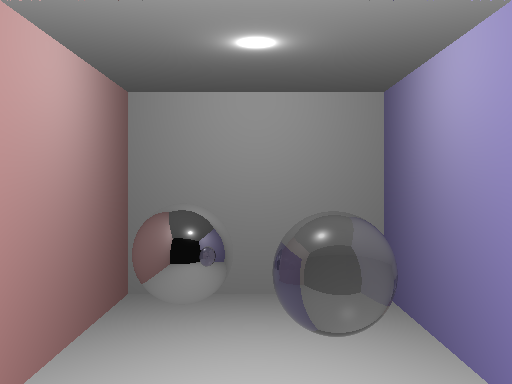camera cam
{
pixeldim 512 384
worlddim 5.12 3.84
viewpoint 2.56 2 5
}
light top
{
location 2.56 3.80 -1.5
emissivity 1 1 1
}
material gray
{
ambient 3 3 3
diffuse .9 .9 .9
}
material green
{
ambient 0 5 0
diffuse 0 .5 0
}
material salamander
{
ambient 3 2 2
diffuse .9 .9 .9
}
material slate
{
ambient 2 1.8 3
diffuse .9 .9 .9
}
material transparent
{
ambient 3 3 3
diffuse .1 .1 .1
specular .9 .9 .9
alpha .9
ior 1.83
}
material chrome
{
ambient 3 3 3
diffuse .1 .1 .1
specular .9 .9 .9
}
plane backwall
{
material gray
normal 0 0 1
point 0 0 -5
}
plane leftwall
{
material salamander
normal 1 0 0
point 0 0 0
}
plane rightwall
{
material slate
normal -1 0 0
point 5.12 0 0
}
plane ceiling
{
material gray
normal 0 -1 0
point 0 3.84 0
}
plane floor
{
material gray
normal 0 1 0
point 0 -0.2 0
}
sphere left
{
material chrome
center 1.25 .75 -4
radius .9
}
sphere right
{
material transparent
center 3.7 .7 -2.3
radius .9
}

